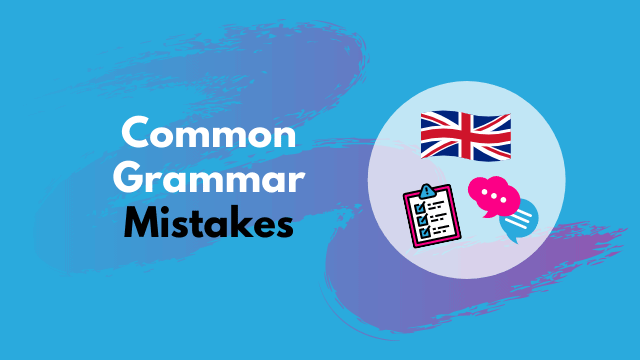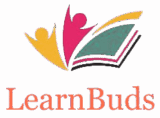Common Grammar Mistakes & How to Fix Them

About Course
Level: Beginner (A1–A2)
Category: English Grammar
Format: 6 Modules | 15 Lessons | Exercises Included
Goal: Learn how to identify and fix the most frequent grammar mistakes made by beginner English learners.
✅ Why This Course?
Are you struggling with basic English grammar? Do you often say things like “She go to school” or “I no want that”?
You’re not alone — millions of learners make these mistakes. But the good news is: you can fix them easily!
This course will guide you step-by-step through the most common grammar errors, explain why they happen, and teach you the correct forms with clear examples and beginner-friendly practice.
📚 Course Structure
The course is divided into 6 easy-to-follow modules. Each module covers a grammar area where mistakes often happen and shows you how to correct them — fast.
📘 Module 1: Sentence Foundations
Summary: Learn how to build correct English sentences. We fix problems like missing subjects or using words in the wrong order.
🔹 Lesson 1.1: Missing Subject or Verb
❌ Wrong: Is raining today.
✅ Correct: It is raining today.
What’s wrong? English sentences always need a subject and a verb. “It is” is needed here.
🔹 Lesson 1.2: Wrong Word Order
❌ Wrong: She always is tired.
✅ Correct: She is always tired.
What’s wrong? Adverbs like “always” must be placed in the correct position depending on the verb type.
📘 Module 2: Verbs and Tenses
Summary: This module helps you use the right verb forms in the right tense. Learn to avoid mistakes with “be” verbs, -s endings, and past tense.
🔹 Lesson 2.1: Incorrect Use of “Be” Verbs
❌ You is smart.
✅ You are smart.
Learn when to use “am,” “is,” and “are” correctly.
🔹 Lesson 2.2: Forgetting the -s in Present Simple
❌ He play guitar.
✅ He plays guitar.
Add -s for third person singular (he/she/it).
🔹 Lesson 2.3: Using Present Instead of Past
❌ Yesterday I go to market.
✅ Yesterday I went to the market.
Learn regular and irregular past tense forms.
📘 Module 3: Articles and Plural Nouns
Summary: Articles like “a,” “an,” and “the” confuse many learners. This module explains article use and how to form plurals, including irregular ones.
🔹 Lesson 3.1: Missing or Wrong Articles
❌ I saw elephant.
✅ I saw an elephant.
Use “a” before consonant sounds and “an” before vowel sounds.
🔹 Lesson 3.2: Incorrect Plurals
❌ I have two childs.
✅ I have two children.
Some plurals are irregular. Learn them the easy way.
📘 Module 4: Pronouns and Possessives
Summary: Understand the difference between subject/object pronouns and possessive forms like “his,” “her,” and “their.”
🔹 Lesson 4.1: Using “Me” Instead of “I”
❌ Me like it.
✅ I like it.
Use subject pronouns for the person doing the action.
🔹 Lesson 4.2: Confusing “his,” “her,” and “their”
❌ Her brother is here. (when talking about a boy)
✅ His brother is here.
📘 Module 5: Prepositions and Questions
Summary: Fix common problems with time and place prepositions, and learn how to form correct questions in English.
🔹 Lesson 5.1: Wrong Preposition
❌ I was born on 2001.
✅ I was born in 2001.
Learn when to use “in,” “on,” and “at” correctly.
🔹 Lesson 5.2: Incorrect Question Order
❌ You are coming?
✅ Are you coming?
Always place the verb before the subject in questions.
📘 Module 6: Confusions and Extra Fixes
Summary: This final module covers double negatives and word confusions like “there/their/they’re” — simple fixes for common but tricky errors.
🔹 Lesson 6.1: Double Negatives
❌ I don’t want nothing.
✅ I don’t want anything.
Avoid using two negative words in one sentence.
🔹 Lesson 6.2: Confusing Words: Their / There / They’re
❌ There going to school.
✅ They’re going to school.
Understand the difference:
-
Their = belongs to them
-
There = a place
-
They’re = they are
🧪 Practice & Exercises
Each lesson includes:
-
✅ Correct and incorrect sentence comparisons
-
✍️ Short grammar tasks
-
🧠 Fill-in-the-blank exercises
-
🗣️ Speaking practice ideas
🏁 What You’ll Achieve by the End
By completing this course, you will:
-
Speak more clearly and confidently
-
Avoid common errors in conversation and writing
-
Use correct grammar in real-life situations
-
Build a strong grammar foundation for intermediate learning
Course Content
Module 1: Sentence Foundations
-
Lesson 1.1: Missing Subject or Verb
-
Lesson 1.2: Wrong Word Order
Module 2: Verb Tenses and Forms
Module 3: Articles and Nouns
Module 4: Pronouns and Possessives
Module 5: Questions and Prepositions
Module 6: Special Confusions & Extra Fixes
Student Ratings & Reviews

